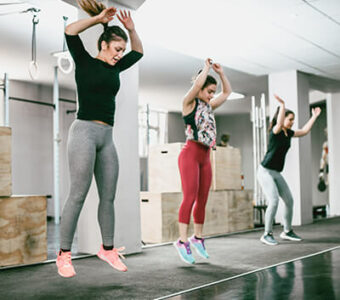Whether you’re a seasoned marathoner or just starting out, we have some valuable advice on how to prepare for the upcoming race season this spring and summer.
Ben Bring, DO, sports medicine physician at OhioHealth and medical director of the OhioHealth Capital City Half & Quarter Marathon, has tips every runner can use to improve running speed, increase distance and prevent injuries.
Injury prevention
Even longtime runners can push themselves too far and too fast. Dr. Bring says it’s better to run shorter distances slowly with proper body mechanics than ramp up your mileage too quickly. This is especially true for children and teens who frequently struggle with growth plate injuries. Since running is often a form of stress relief, it can be challenging to cut down your mileage or rest for a few days. However, nothing takes you out of a race faster than an injury.
In addition to increasing your mileage gradually and watching your form, a big part of preventing running injuries is strength training. However, it’s often overlooked — and spending several hours each day sitting at a desk only makes the issue worse.
“Most of us have a weak core, back muscles and hip stabilizers as a result of our lifestyle,” says Dr. Bring. “If you’re weak and deconditioned before you start running, that can create a lot of problems.”
It’s natural to experience a bit of soreness or muscle fatigue while training for a race or adding distance. Understanding the difference between pain and soreness can be challenging. Dr. Bring says that you shouldn’t ignore symptoms such as nighttime pain or discomfort while walking or using stairs. He also says that stress injuries are on the rise in new runners. Chronic lower extremity injuries can turn into stress fractures quickly – especially in some of the bones in your feet and ankles.
The warmup
All runners should do some dynamic stretches and mobility exercises before setting off. In addition to warming up your muscles, stretching also helps develop healthy muscle fibers and prepare your body for activity. Focus on activating your gluteal muscles and developing your ankle and hip mobility, including external rotation, flexion and extension. Dr. Bring also says that big-toe extension can be the key to reducing heel or mid-foot striking. He suggests rolling your foot on a golf or tennis ball to boost your mobility.
Fuel and hydration
Carbohydrates aren’t a popular choice for people hoping to shed pounds, but they’re a great source of glycogen, or energy storage, for muscles. To help your body get the energy it needs to run and train, Dr. Bring suggests starting your day with plenty of protein and simple starches such as berries, bananas and oranges.
“As a runner, you always want to make sure you’re eating properly for your activity level,” says Dr. Bring. “It’s important to stay hydrated and avoid fast food or processed food that can slow your muscle development.”
Check with your provider to make sure you are balancing out the miles you’re running with the right nutrition. Not getting the calories you need can lead to a condition called relative energy deficiency in sports (REDS).
With distance runners, there’s a fine line between underhydration and overhydration. Every runner has different needs, and Dr. Bring says a good way to determine how much water you should drink is to weigh yourself before and after you run and calculate any weight lost while exercising. On average, you should replace 6 ounces of water for every pound lost.
Monitoring your urine color can also help you gauge your hydration levels. It’s important to replace the electrolytes you lose while sweating, as many people only drink water during long races. Electrolyte replacement drinks can be helpful, as can some sports drinks. That said, Dr. Bring suggests diluting them since they often contain a lot of sugar.
The right gear
Anyone who has shopped for new running gear lately knows there are plenty of new running gadgets available. But all you need to hit the pavement is a great-fitting pair of running shoes. A running store is generally the best place to find shoes that support the shape of your foot and help stabilize any ankle movement, such as pronation or supination, while running.
If you have the funds, Dr. Bring suggests investing in a smartwatch that can help you track metrics such as your heart rate and running cadence as part of your training plan. New runners especially should monitor their maximum heart rate while they run. They should also pay attention to information about their running stride or cadence. Because heel striking can lead to other injuries, taking smaller steps and running at a comfortable pace is the key to injury prevention. Fortunately, a smartwatch can help runners learn how to control their stride until it becomes second nature.
Visualize your goals
Goal setting can take many different forms. Dr. Bring recommends visualizing the race, whether it’s a 5K or the first quarter of a half marathon. Taking a few minutes each day to think about how it would feel to finish a race can be helpful when crafting short and long-term goals.
“Positive thinking can be very powerful, but it can feel like a lost art in this day and age,” says Dr. Bring. “Even if you go off track, the best thing is that you’ve got today and you’ve got tomorrow, so don’t worry about the past.”
If you’d like to hear more from our conversation with Dr. Bring, listen to the March 5, 2024 episode of The Wellness Conversation, “Spring into Action: Gearing Up for Race Season with Dr. Ben Bring.”





